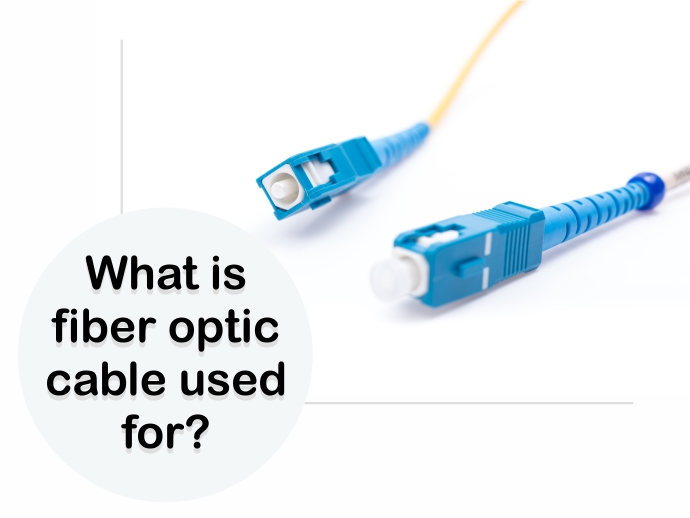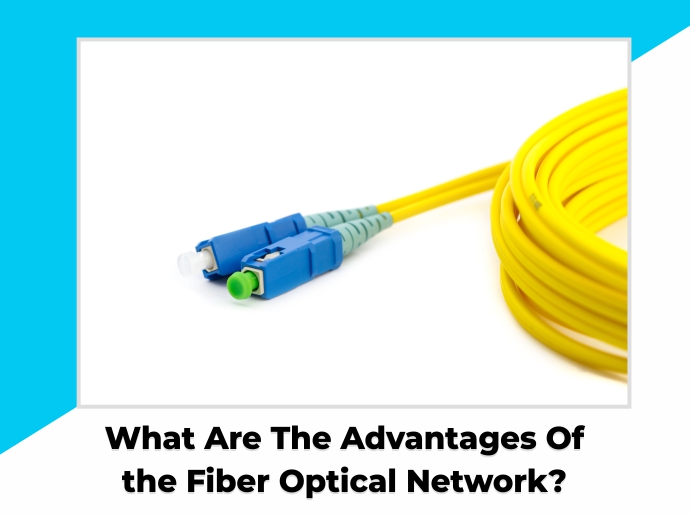What is fiber optic cable used for?
People know that there is something called fiber optical cable but they don’t know everything about the same, especially where they are used. Some organizations fail to utilize the benefits of fiber optic cable because they don’t know if it’s an ideal option.
In this post, we will discuss the uses of fiber optical fiber or which industry gets the maximum benefit from it. But, before that, we will discuss what a fiber optical cable is, how it works, what are its advantages, and others for complete information.
Fiber Optical Cable- A brief introduction
Also known as optical fiber, the fiber optical cable is the technology that transmits information as light pulses along a glass or plastic fiber. There are varying numbers of glass fibers. They range from a few up to a couple hundred.
The layers of the glass fibers are called cladding, buffer tube layer, and jacket layer. Cladding surrounds the glass fiber core, the buffer tube layer protects the cladding and the jacket layer acts as the final protective layer for the individual strand.
People prefer fiber optical cables over copper cables because of their advantages. Some of the advantages are higher bandwidth and transmit speed. Fiber optical fibers are used for long-distance and high-performance data networking, commonly telecommunication services.
How does fiber optical cable work?
In the form of light particles or photons, the fiber optic cable transmits data. The light particles or photons pulse through a fiber optic cable. The refractive index of the glass fiber core and cladding is different, bending the incoming light at a certain angle.
The light signal sent through the fiber optic cable reflects off the core and cladding in the series of zig-zag bounces. This reflection happens based on the process called total internal reflection. The glass layers are dense so the light signals don’t travel at the speed of light. They travel about 30% slower than the speed of light.
The best part is that there is a way to renew or boost the light signal throughout the journey via fiber optic cables. The transmission just requires repeaters at distant intervals. The repeaters help by converting the optical signals into an electrical signal and processing the same electrical signal and retransmitting the optical signal.
What are the advantages of fiber optic cables?
Fiber optic cables support higher bandwidth capacities and are less susceptible to interference such as electromagnetic interference. Other than this, the fiber optic cables can be submerged in water and they do not need to be maintained or replaced frequently. Most importantly, the fiber optic cables are strong, thin, and light.
What are the types of fiber optical cables?
The two primary types of fiber optic cables are single-mode fiber and multimode fiber.
Single-mode fiber
Used for longer distances because of the smaller diameter of the glass fiber core, the single-mode fiber lessens the possibility for attenuation. Attenuation means a reduction in signal strength.
The smaller opening in the single-mode fiber isolates the light into a single beam that offers a more direct route and enables the signal to travel a longer distance.
Compared to multimode fiber, single-mode fiber has considerably higher bandwidth. In the single-mode fiber, the light source is typically a laser. Regarding the cost, the single-mode fiber is expensive because it requires precise calculations to produce the laser light in a smaller opening.
Multimode fiber
Unlike single-mode fiber, multimode fiber is used for shorter distances. It’s because it has a larger core opening that enables light signals to bounce and reflect more along the way. The larger diameter of the multimode fiber allows multiple pulses to send through the cable at one time. This results in more data transmission.
With the multimode fiber, there is more possibility for signal loss and reduction or interference. This is typically used as an LED to create the light pulse.
What are the uses of fiber optical cables?
Computer networking and broadcasting
Due to optical fiber cable’s ability to transmit data and provide high bandwidth, it is commonly used in computer networking and broadcasting. Other than this, the cable is used in broadcasting and electronics as it provides better connections and performance.
Internet and cable television
After computer networking and broadcasting, the use of fiber optic cable for the internet and television is very high. It’s because the fiber optic cable can be installed to support long-distance connections in different locations. In other words, easy internet and cable connections in long-distance and different locations.
Undersea environments
Not just in simple and easy conditions, but fiber optic cables are also used in most at-risk environments. One such risk condition is undersea. It’s because cables can be submerged in water. The best thing is that these cables don’t require frequent replacement. So, one who uses the cable undersea doesn’t have to risk his life for repair and replacement of the cables.
Military and space
In the military and space, fiber optical cable is used for communication and signal transfer. Other than this, the fiber optic cable can provide temperature sensing in the military and space. This is possible because fiber optical cables are lightweight and small in size.
Medical and healthcare
Fiber optics is used in various medical instruments to provide precise illumination. The cables aid in minimally invasive medical procedures because they increasingly enable biomedical sensors.
Other than this, the cables are used in various tests like MRI scans because they are not subject to electromagnetic interference. Other medical applications where fiber optic cables are used are X-ray imaging, endoscopy, light therapy, and surgical microscopy.
To know more about Ethernet cables, connect with us via WhatsApp at 971585811786.









